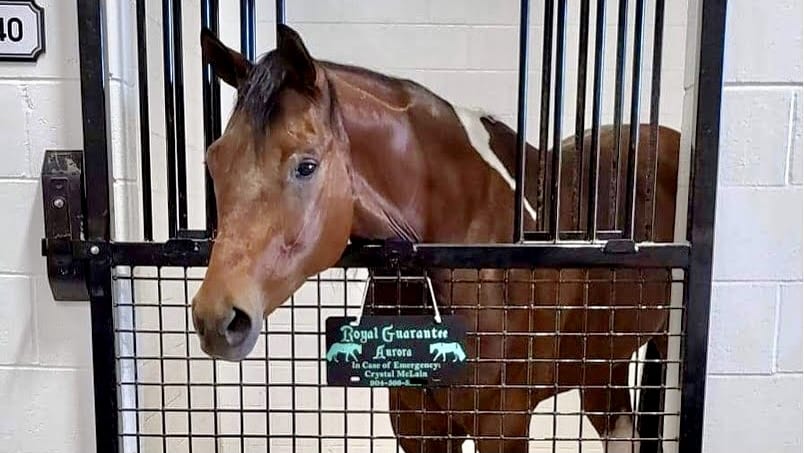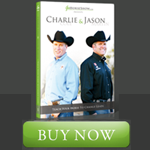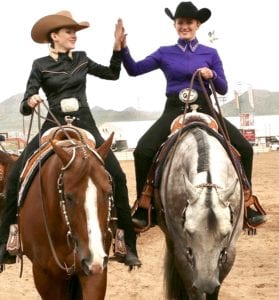Traveling with your horse can be stressful and scary, especially if you are doing it solo. As big and powerful as horses are, every horse owner equally understands how fragile they can be. While head-to-toe bubble wrap isn’t a feasible option, there are plenty of other ways you can protect your horse while traveling and showing.
Hauling to a horse show provides many opportunities for something bad to happen, but with proper planning and caution, you can increase the odds of safe, worry-free travel throughout the busy show season and have more fun.
For most shows, you will move your horse into an unknown stall at a facility you don’t know well. There is always a slim chance of injury or disease in unfamiliar environments. Protecting your horse in this unfamiliar environment requires just a bit of forethought and preparedness.
Check out these easy tips for increasing your peace of mind while on the road showing.
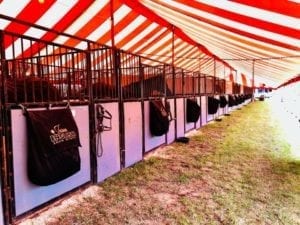 1. Disinfect and inspect the stall
1. Disinfect and inspect the stall
It is a good idea to disinfect the stall before your horse enters. A can of Lysol or a bleach and water solution will kill off most germs and decrease the chance of disease. Before unloading your horse from the trailer, spray down the walls and bars of the stall and allow it to dry.
While you spray the stall down, it is vital to check the stall over for any sharp edges, loose nails, or potential injury spots. And it is a good idea to carry a hammer with you to remove nails or hammer them in tight. If the stall is too unsafe, you can request a different stall from show management.
2. Bedding
To bed the stall, make sure to use a sufficient amount of sawdust to cushion your horse and give them a comfortable spot to rest after long show days. If the stall has concrete, it may be good to utilize rubber mats to limit the chance of slipping and lessen the fatigue to the horse’s joints from standing on concrete. Alternatively, an extra bag or two of shavings can provide a better cushion between the concrete and your beloved equine partner.
3. Safe stall accessories
When setting up your stall, be careful of any low-hanging hay bags, buckets, or ties that a horse could get a leg over or through. Also, be sure to use stall hangers for halters and bridles that fit tightly over the stall bars. Otherwise, a horse’s halter can easily get caught on the portion of the hanger within the stall, which can cause quite a problem and potential injury.
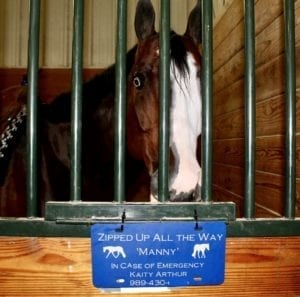 4. “In case of emergency” stall signs
4. “In case of emergency” stall signs
Having your emergency contact information available at your horse’s stall is a great idea. This information will provide a quick point of communication if there is an emergency. A simple and attractive way to do that is with a custom stall sign from Brown Acre Designs. These are lightweight, sturdy signs that are easy to travel with and attach easily to any stall front. The signs feature your horse’s name and your contact information so that you can be contacted if there is an emergency. They also come in a wide variety of color and customization options to create something fun and attractive for your stall front while also providing that much-needed peace of mind.
Shop: https://brown-acre-designs.square.site/s/shop
5. “Just in case” box
It is good to travel with a “just in case box” to help you feel ready to take on any unforeseen problems. Stock a small container with vet wrap, gauze, antibiotic cream, electrolytes, a tube of Bute paste, and a tube of Banamine paste to keep in the trailer.
This box provides peace of mind knowing that you are equipped to handle it if something bad happens. Do a little research into how to safely use Bute and Banamine, how to clean and wrap a wound properly and when to administer electrolytes. You hope never to have to use the supplies and knowledge, but it is still essential to have it and be knowledgeable on how to use the emergency items within.
Another way to increase your peace of mind while at shows is to get to know the people stalled near you or find a group of other solo fellow showmen to stall with. When traveling and showing alone, it can be very overwhelming at times and isolating. Knowing some friendly faces are nearby can lower the stress level and knowing that you can ask someone for help if you need it is a huge help at horse shows.
***
Showing horses solo doesn’t have to be stressful. Take simple steps to avoid unsafe situations and injuries to increase your peace of mind. Furthermore, be prepared and able to handle emergencies if they arise so that you can avoid some of the panic. All that is left to do is enjoy the ride.


